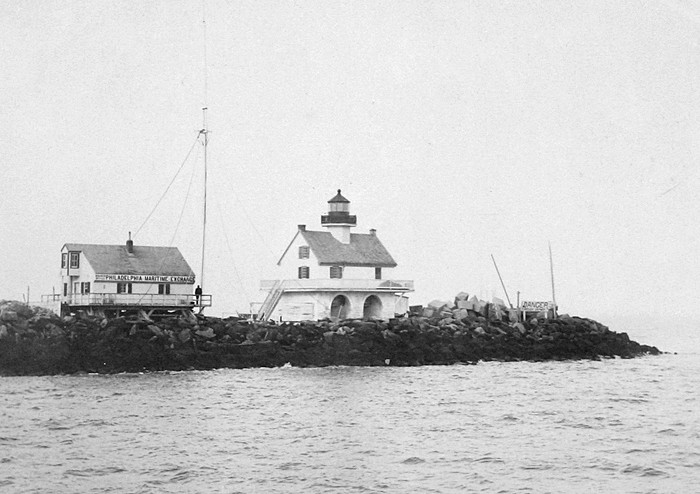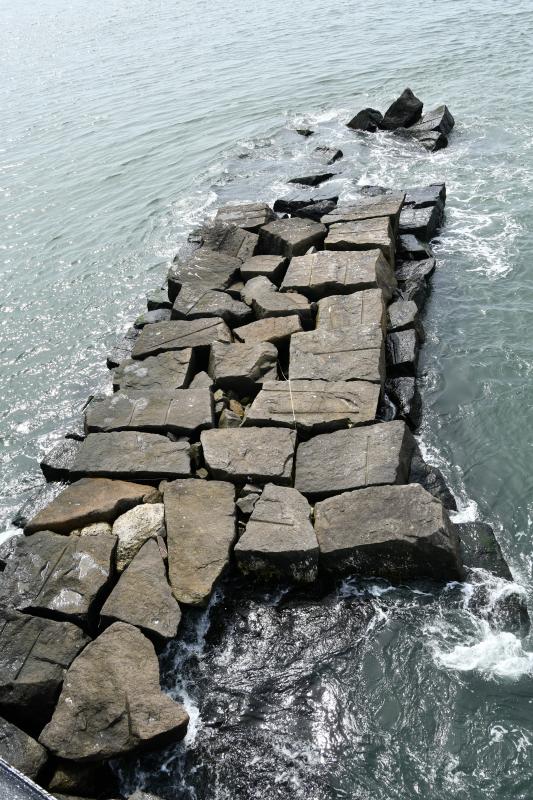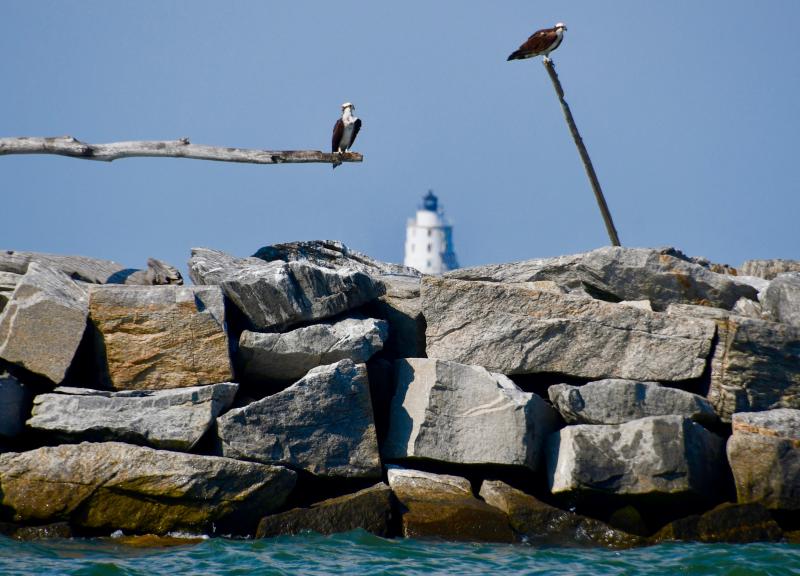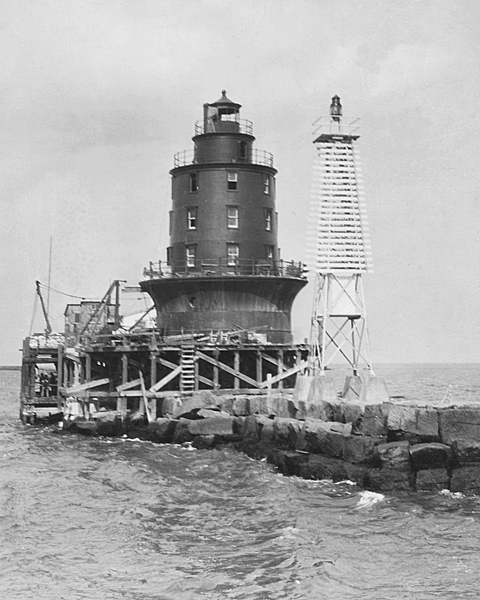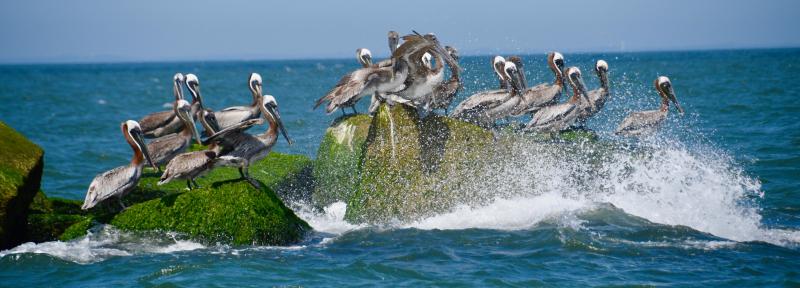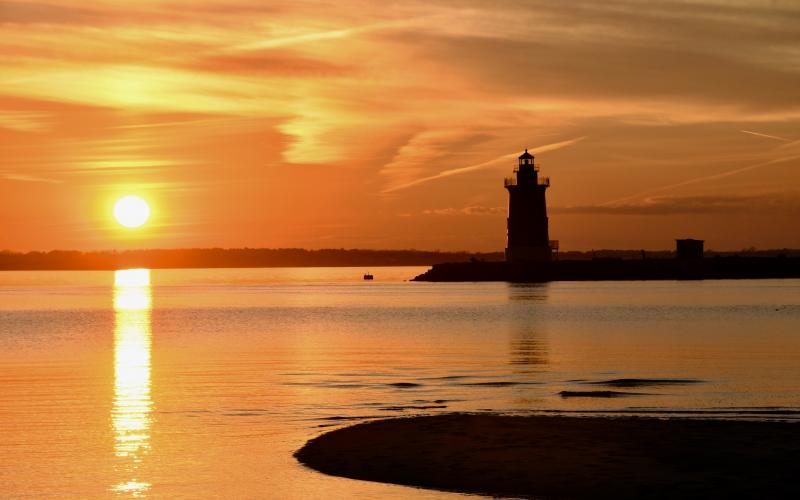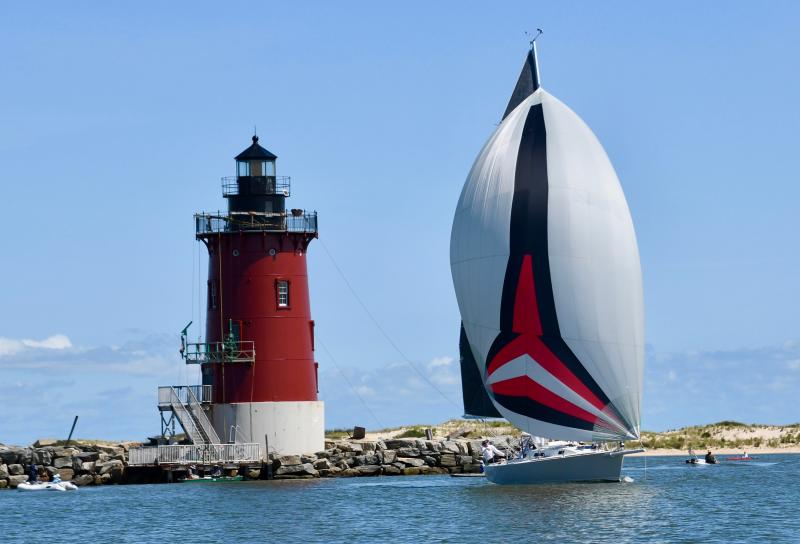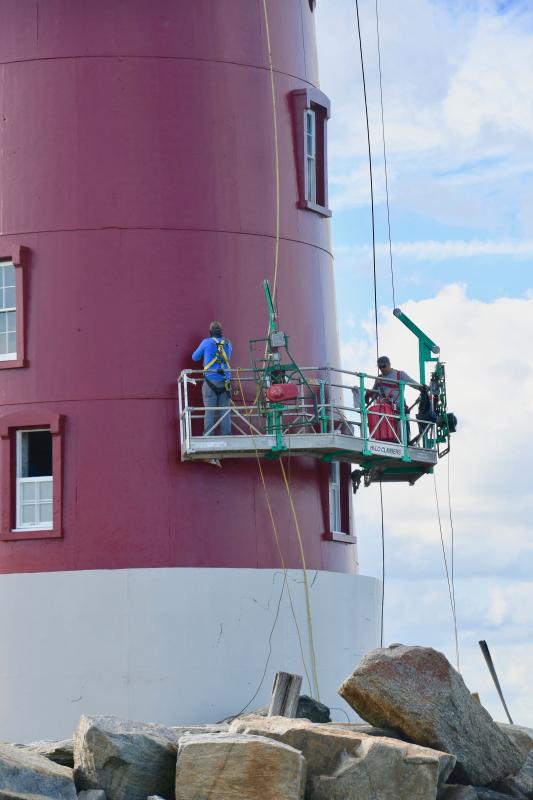Delaware Bay breakwaters were marvels in their day
There is a place in the Cape Region that has played a significant role in our maritime history, dating back nearly 200 years. Yet, the vast majority of people have never been to it or touched it; they’ve only seen it from afar. This place was considered an engineering marvel in its time.
Most of us know at least a little bit about the history of the two most recognizable Cape Region landmarks: the Harbor of Refuge Lighthouse (white one) and the Delaware Breakwater East End Lighthouse (red one).
But do you know anything about what they are built on?
You can't begin to delve into the history of the lighthouses without first highlighting their foundations – the two Delaware Bay stone breakwaters constructed to create a safe harbor for ships.
The history is fascinating because it recalls a time when seafaring vessels were the only means to transport goods along the East Coast. Delaware Bay was an important route for access to the Port of Philadelphia, one of the key cities in the nation during the 1800s.
Today, as we watch the Cape May-Lewes Ferry cross the bay and view oil tankers anchored off in the distance, we can't fathom the sight of hundreds of large sailboats – and later, steam-powered ships – plying the bay off the Lewes coast.
Known today as the inner and outer walls, the breakwaters were considered wonders of engineering and construction at the time. Combined, the two are more than 2 miles long and cost nearly $90 million in today's dollars. The first building funds were appropriated during the John Quincy Adams administration.
The Delaware Breakwater was the third of its kind built in the world, the second-longest in the world and the only one in the Western Hemisphere.
They were constructed by the U.S. Army Corps of Engineers to create a safe harbor for ships during inclement weather. During storms, it was not usual to see hundreds of ships anchored in the Harbor of Refuge created by the breakwaters, which is designated as a national historical area.
Delaware Breakwater, the inner wall
With none of the heavy equipment used today, construction of the breakwater was a major undertaking in 1829. More than 835,000 tons of stone quarried from Delaware and Pennsylvania was shipped to Lewes and dumped off ships to build up the breakwater. When finished in 1869, the $2.1 million breakwater was 2,586 feet in length. A stone structure with a length of 1,400 feet was built west of the breakwater to serve as an icebreaker.
Almost lost to history was the addition of a 1,700-foot-long iron-rail pier constructed from what is now Cape Henlopen State Park to the breakwater lighthouse to provide direct access to ships in the harbor.
Two lighthouses stood on the breakwater. The west end lighthouse was built in 1849, replacing a light placed atop a house on the breakwater built for the superintendent in charge of construction. The lighthouse was in operation until 1903 and was removed in the 1950s. Some ruins of its stone foundations are visible along the breakwater.
The lighthouse was turned over to the Philadelphia Maritime Exchange, which had established a reporting station on the breakwater dating back to 1875. The reporting station provided advance notice to the port of Philadelphia about ships’ arrivals and also advised area lifesaving stations about the locations of shipwrecks.
Contact with ships heading up the Delaware Bay to Philadelphia was made by workers in boats who delivered messages back and forth between ships and the reporting station. In bad weather, code flags were used. Eventually, the Western Union Telegraph Co. established a station at the exchange.
After several rebuilds due to storm damage, the exchange was moved to land in the area around the Cape Henlopen Point and Lewes. The exchange was in business until 1942.
Records indicate that as many as 12,000 vessels took refuge at the breakwater each year from 1872-75.
The west end light was replaced by the current east end light in 1885, which is a 56-foot-tall cylindrical iron tower with a brick lining, bolted to a concrete foundation. It was automated in the 1950s but is no longer used as an aid to navigation.
The State of Delaware was granted ownership of the lighthouse in 2001, which leased it to the Delaware River & Bay Authority. In 2004, a partnership between the authority and the Delaware River & Bay Lighthouse Foundation was created, allowing volunteers to begin fundraising and restoration efforts for the neglected lighthouse.
Thanks to restoration work by those volunteers, who first had to remove decades of accumulated bird guano and dirt, the lighthouse is now open for tours.
Harbor of Refuge Breakwater, the outer wall
The Army Corps realized that more was needed to create a safer harbor, and plans for a second breakwater were put in place. The Harbor of Refuge Breakwater, constructed from 1897-1901 at a cost of $2.2 million, was 8,040 feet in length with an extension of ice breakers another 1,250 feet. To put the scope of the project in perspective, that $2.2 million is equivalent to nearly $67 million today. The project also included a series of ice piers to break up ice.
Steam-powered equipment made the job easier and quicker, so much larger stones – up to 13 tons – could be used, which were twice as large as the biggest stones used in the original breakwater.
The stone utilized consisted of quartz, feldspar and hornblende, which is widely used for road and railroad bed construction.
The first Harbor of Refuge Light began operation in 1908. Damaged by storms and knocked 2 inches off its foundation in 1918, it was dismantled and replaced by the current structure in 1926. This light replaced the 1767 Cape Henlopen Lighthouse, which was abandoned in 1924 and fell into the sea in 1926.
The Harbor of Refuge has weathered many storms over its 96-year history, including the Storm of 1962, when the breakwater was completely submerged and waves reached as high as the second story.
The light became automated in 1973.
The Delaware River and Bay Lighthouse Foundation took ownership of the lighthouse in 2004. The year before, on June 21, the lighthouse received its first tour, offering a rare visit to an offshore lighthouse. Seasonal tours of the lighthouse are now offered each year.
The years have taken a toll on the breakwater at the foundation of the lighthouse, as many large stones have fallen away from the structure. Thanks to $250,000 from the Infrastructure Investment and Jobs Act, a study will be conducted to determine a course of action to repair the breakwater.
A $3 million project in 2011 included repairs to the lighthouse wall on the breakwater. The lighthouse is still used as an aid to navigation, and it's not unusual to hear its loud foghorn sounding throughout the Lewes area.
The history of the breakwaters can't be completely told without stories about the courageous people who tended the lighthouses. That's a subject for another column.
BREAKWATER TRIVIA:
Rats – yes, rats – live among the breakwater rocks.
Recently, pelicans and seals have called the breakwater home, with seals in the winter and pelicans in the summer and fall.
At certain places around the outer breakwater, the water can be 70 to 100 feet deep.
During the Blizzard of 1888, considered the most devastating storm in U.S. recorded history, 50 vessels in the harbor near the breakwaters were sunk or damaged, and seven sailors lost their lives. That number would have been substantially higher if not for the courageous efforts of the Cape Henlopen and Lewes lifesaving squads.
